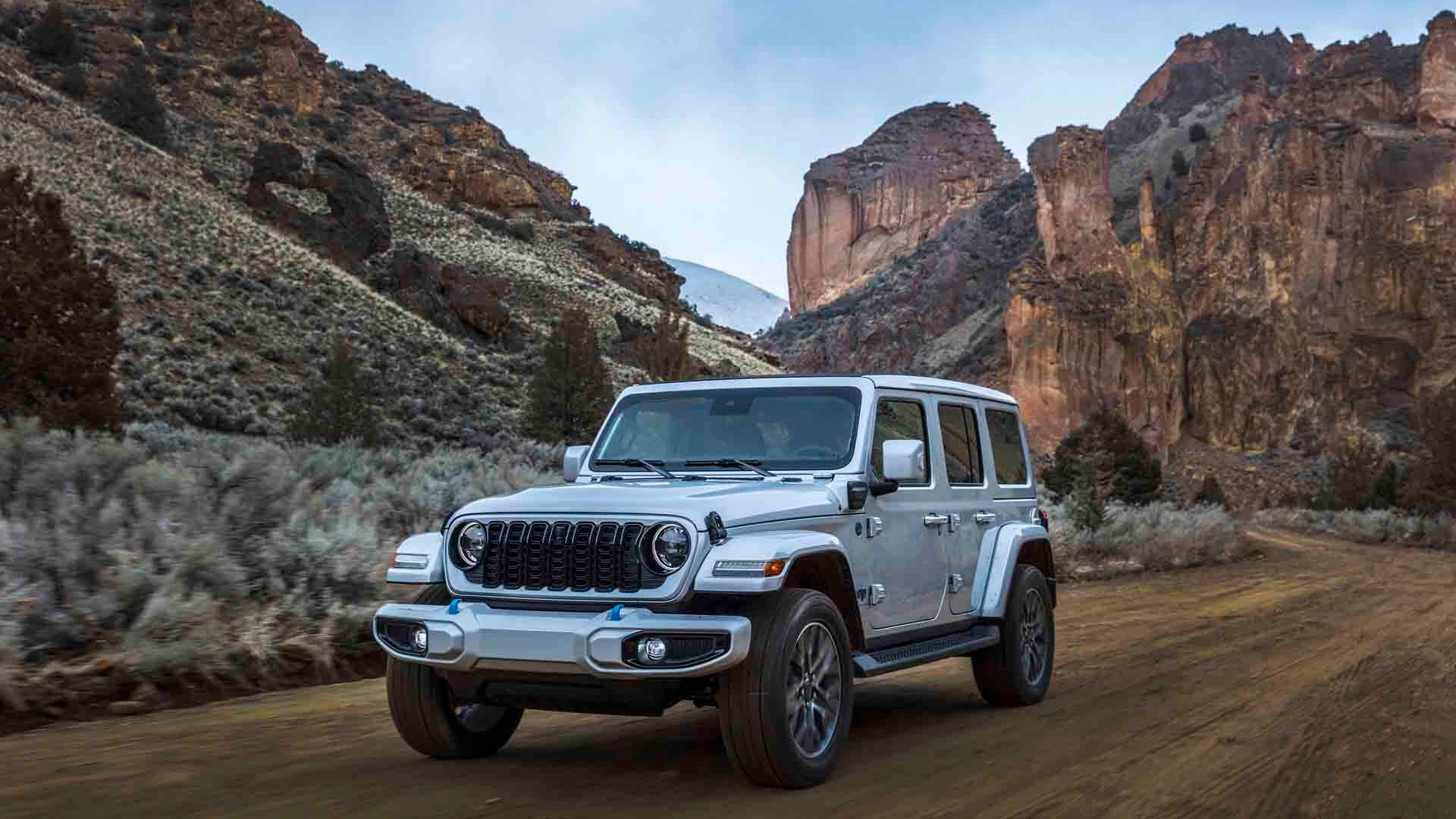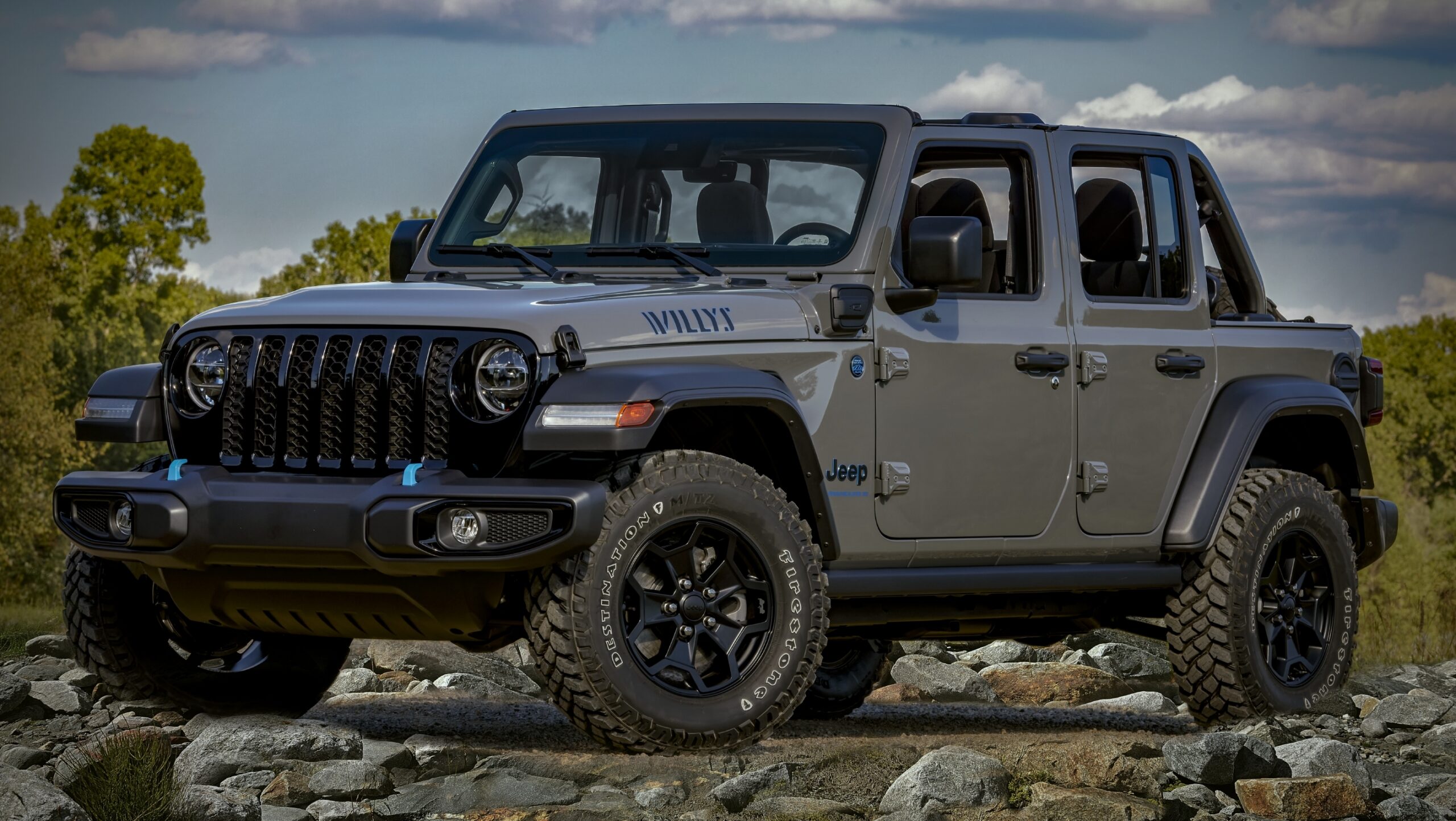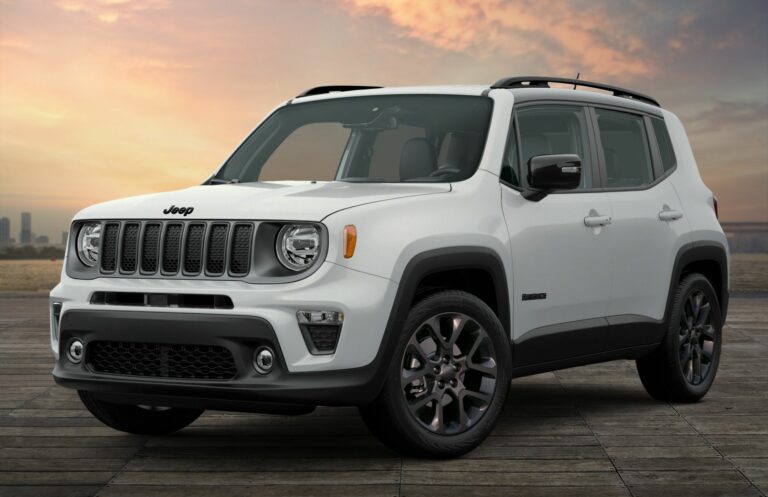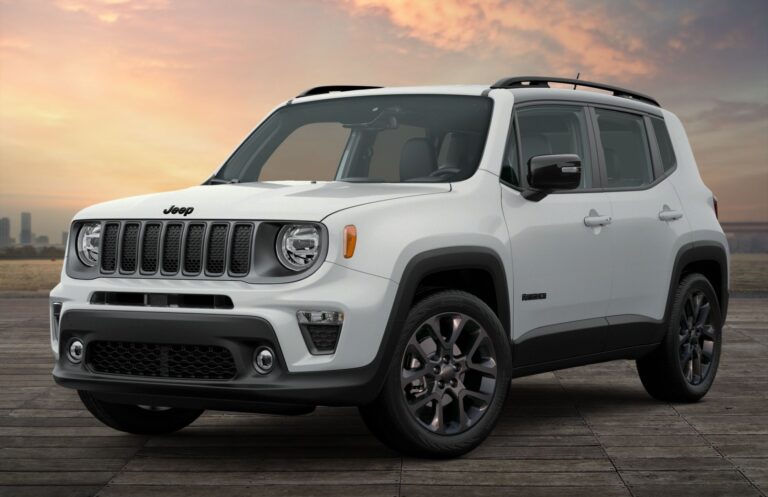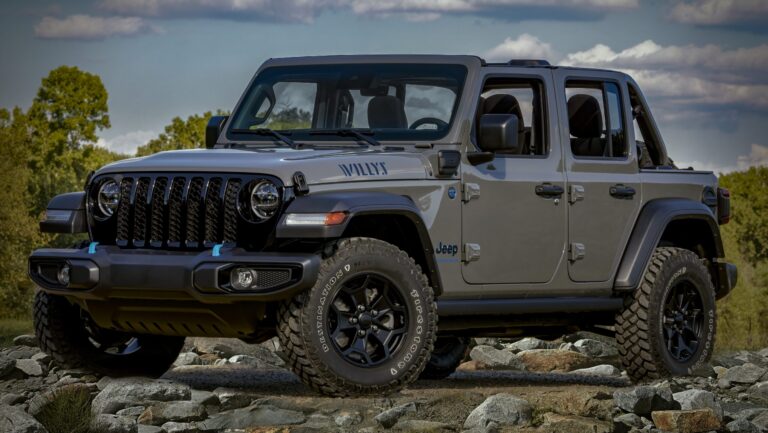Jeep Wrangler 3rd Row Seat: Expanding Capacity for Adventure
Jeep Wrangler 3rd Row Seat: Expanding Capacity for Adventure jeeps.truckstrend.com
The Jeep Wrangler is synonymous with off-road prowess, open-air freedom, and an iconic design that has captured the hearts of adventurers for decades. However, its traditional two-row seating configuration often presents a challenge for growing families or groups of friends eager to share the adventure. This is where the concept of a "Jeep Wrangler 3rd Row Seat" emerges as a popular and often necessary aftermarket solution, transforming the rugged 4×4 into a more versatile people-mover.
Unlike larger SUVs or minivans, a 3rd-row seat is not a standard factory option for any Jeep Wrangler model. Instead, it’s a modification, primarily an aftermarket addition designed to maximize passenger capacity by utilizing the cargo area. This article delves into everything you need to know about adding a 3rd-row seat to your Jeep Wrangler, exploring the "why," the "how," crucial considerations, and what to expect from such a significant modification.
Jeep Wrangler 3rd Row Seat: Expanding Capacity for Adventure
The "Why": The Growing Need for More Seats in a Wrangler
The standard Jeep Wrangler (both 2-door and 4-door Unlimited models) typically offers seating for four to five passengers. While this is sufficient for many, several scenarios drive owners to seek additional seating:
- Growing Families: As families expand, the beloved Wrangler might no longer accommodate everyone comfortably, forcing a difficult choice between vehicle loyalty and practical needs. A 3rd row allows families to keep their Wrangler.
- Carpooling & Group Adventures: For those who frequently carpool, take friends on trips, or participate in group outdoor activities, extra seating becomes invaluable, enabling more people to share the experience in one vehicle.
- Versatility: Adding a 3rd row can transform the Wrangler from a specialized off-roader into a more versatile daily driver that can handle school runs, grocery trips, and weekend excursions with more passengers.
- Avoiding a Second Vehicle: For some, adding a 3rd row is a cost-effective way to avoid purchasing a second, larger family vehicle, leveraging their existing investment.
![]()
The desire to retain the unique driving experience and off-road capability of a Wrangler, while addressing the practical need for more passenger capacity, is the primary driver behind the demand for 3rd-row seat solutions.
Types of 3rd Row Seat Solutions for the Jeep Wrangler
Since Jeep does not offer a factory 3rd-row option, the market is dominated by aftermarket manufacturers and custom fabricators. These solutions vary in design, installation complexity, and features.

-
Aftermarket Seat Kits:
- Bench Seats: The most common type, these typically feature a single bench that spans the width of the cargo area. They are often designed to fold and tumble forward when not in use, partially restoring cargo space. Some models offer split-folding capabilities.
- Individual Bucket Seats: Less common due to space constraints, but some premium kits might offer two individual seats, providing slightly better comfort and adjustability for the rear passengers.
- Material and Design: These seats come in various materials (fabric, vinyl, faux leather) to match or complement the existing interior. They usually include integrated seat belts and sometimes LATCH anchors for child seats.
- Key Manufacturers: While specific brand names can fluctuate, companies specializing in vehicle accessories or child restraint systems often offer these kits (e.g., "Little Passenger Seats" is a well-known provider for various vehicles, though specific Wrangler solutions vary by market).
-
Custom Fabrications:
- For those with unique requirements or a DIY spirit, custom fabrication is an option. This involves designing and building a seat solution from scratch or heavily modifying an existing one.
- Complexity: This route requires significant engineering knowledge, fabrication skills, and a deep understanding of safety standards. It’s generally not recommended for the average owner due to the inherent safety risks if not executed perfectly.
Compatibility: Most aftermarket 3rd-row seats are designed for the 4-door Jeep Wrangler Unlimited models (JK and JL generations), as the 2-door models simply lack the necessary cargo space for any practical 3rd-row addition.
Installation: A Step-by-Step Overview (General Principles)
Installing a 3rd-row seat in a Jeep Wrangler is a significant modification that typically involves drilling into the vehicle’s frame or floor pan. While specific steps vary by kit, here’s a general overview:
Disclaimer: Due to the critical safety implications, professional installation by a qualified mechanic or an authorized installer is highly recommended. Improper installation can compromise passenger safety and vehicle integrity.
-
Preparation:
- Clear the Cargo Area: Remove all items, floor mats, and any existing cargo management systems.
- Remove Interior Trim/Carpet: Access the vehicle’s floor pan and structural crossmembers. This often involves removing the rear carpet, plastic trim pieces, and sometimes even the rear subwoofer if present.
- Locate Mounting Points: Identify and mark the designated mounting points as per the kit’s instructions. These are usually reinforced sections of the frame or floor.
-
Drilling and Reinforcement:
- Precise Drilling: Carefully drill holes into the floor pan or frame at the marked locations. Precision is crucial to ensure proper alignment and structural integrity.
- Mounting Brackets: Attach the heavy-duty mounting brackets to the vehicle’s frame using the provided hardware (high-strength bolts, washers, and nuts). Some kits may require additional reinforcement plates underneath the vehicle.
-
Seat Belt Installation:
- Anchor Points: Install the seat belt anchors, which are often separate from the seat itself and bolt directly into the vehicle’s structure.
- Retractors and Buckles: Mount the seat belt retractors and buckle receivers according to the manufacturer’s instructions, ensuring they are securely fastened and function correctly.
-
Seat Assembly and Mounting:
- Assemble Seat Components: If the seat comes in pieces, assemble it according to the instructions.
- Attach Seat to Brackets: Securely bolt the 3rd-row seat assembly onto the previously installed mounting brackets. Double-check all bolts for tightness.
-
Final Checks:
- Functionality: Test the seat’s folding mechanism (if applicable), seat belt operation, and overall stability.
- Safety Inspection: Perform a thorough inspection of all bolted connections and ensure no wires or lines were damaged during the process.
- Reinstall Trim: Replace any removed carpet or trim pieces.
Tools Required: A robust drill, various socket wrenches, torque wrench, measuring tape, and potentially specialized tools for trim removal.
Time Commitment: Depending on the kit and your experience, installation can take anywhere from 4-8 hours for a DIY enthusiast, or 2-4 hours for a professional.
Key Considerations Before Adding a 3rd Row Seat
Adding a 3rd-row seat is a significant modification with several implications that prospective owners must consider:
-
Safety:
- Crash Testing: Unlike OEM seats, most aftermarket 3rd-row seats are not subjected to the same rigorous government-mandated crash testing as factory components. Reputable manufacturers will conduct their own testing, but it’s crucial to verify any safety certifications (e.g., FMVSS compliance in the US).
- Seat Belts: Ensure the kit includes high-quality, properly anchored seat belts that meet safety standards.
- Child Seat Anchors (LATCH): If you plan to use child seats, confirm that the 3rd-row seat provides LATCH anchors or appropriate top tether points.
-
Space and Comfort:
- Legroom/Headroom: The cargo area of a Wrangler is not designed for comfortable adult seating. Legroom will be minimal, making it suitable mostly for children or small adults on short trips. Headroom might also be limited, especially in hardtop models.
- Cargo Space: Adding a 3rd row significantly reduces or eliminates the rear cargo space when the seat is in use. Even when folded, it will occupy some volume. This impacts luggage capacity for road trips or gear for off-roading.
-
Vehicle Performance:
- Weight Distribution: Adding weight to the rear of the vehicle, especially behind the rear axle, can alter the vehicle’s center of gravity and weight distribution. This can affect handling, braking, and fuel economy.
- Off-Road Capability: The added weight and potentially altered departure angle (if the seat affects the rear bumper or undercarriage clearance) could slightly impact extreme off-road performance.
-
Legality and Insurance:
- Local Regulations: Check your local motor vehicle regulations regarding vehicle modifications and passenger capacity. Some regions may have specific rules about aftermarket seating.
- Insurance: Inform your insurance provider about the modification. While usually not an issue, it’s best to ensure your coverage remains valid for the altered vehicle.
-
Cost:
- Beyond the purchase price of the seat kit, factor in professional installation costs, potential re-upholstery to match existing seats, and any other necessary modifications.
-
Resale Value:
- While a 3rd row might appeal to some buyers, it could deter others who prefer the original configuration or are wary of aftermarket modifications. It might not necessarily increase the resale value proportionately to its cost.
Benefits and Potential Challenges
Benefits:
- Increased Passenger Capacity: The primary and most obvious benefit, allowing 2-3 more people to ride in your Wrangler.
- Enhanced Versatility: Transforms your adventure vehicle into a more practical family hauler.
- Cost-Effective Alternative: Cheaper than buying a larger, second vehicle.
- Retain Wrangler Ownership: Allows you to keep your beloved Jeep while meeting evolving family needs.
Potential Challenges:
- Limited Comfort: The 3rd row is often cramped, especially for adults, making long journeys uncomfortable.
- Significant Cargo Space Reduction: Daily usability for hauling gear is severely limited when the seat is in use.
- Safety Concerns: As discussed, aftermarket seats may not meet OEM safety standards.
- Complex Installation: Requires skill and potentially professional help.
- Impact on Vehicle Dynamics: Added weight can affect handling, braking, and fuel efficiency.
- Potential for Noise/Rattles: Aftermarket components can sometimes introduce new noises.
- Access Issues: Getting into and out of the 3rd row can be awkward, especially for adults, often requiring the 2nd-row seats to be folded forward.
Practical Advice and Actionable Insights
If you’re considering a 3rd-row seat for your Jeep Wrangler, here’s some actionable advice:
- Do Your Homework: Research thoroughly. Read reviews from other Wrangler owners, watch installation videos, and compare different kits from various manufacturers.
- Prioritize Safety: Choose a reputable manufacturer known for quality and safety. Look for any certifications or crash test data they provide. Never compromise on seat belt quality or anchoring.
- Measure and Visualize: Before purchasing, use tape or cardboard to mark out the dimensions of the proposed 3rd row in your Wrangler’s cargo area. This will give you a realistic idea of the available space for passengers and remaining cargo.
- Consider Your Primary Use: Will the 3rd row be used daily or only occasionally? For short trips or long journeys? This will influence how much you prioritize comfort vs. cargo space.
- Professional Installation: Unless you have extensive automotive modification experience and the right tools, seriously consider professional installation. It’s an investment in safety and proper fitment.
- Plan for Cargo: If you plan to use the 3rd row frequently, consider roof racks or hitch-mounted cargo carriers to compensate for the lost internal cargo space.
- Test Fit Kids/Passengers: If possible, "test fit" your typical passengers (especially children in car seats) in a friend’s vehicle with a similar setup, or at least mentally picture them in the limited space.
Price Table: Estimated Costs for Jeep Wrangler 3rd Row Seats
Please note that these are estimated price ranges and can vary significantly based on the manufacturer, specific features (material, folding mechanism, LATCH points), and current market conditions. Installation costs are additional.
| Product Type/Brand (Estimated) | Key Features | Estimated Seat Kit Price (USD) | Estimated Professional Installation Cost (USD) | Total Estimated Cost (USD) |
|---|---|---|---|---|
| Basic Aftermarket Bench | Fabric upholstery, fixed back, 2-point belts | $600 – $1,200 | $300 – $600 | $900 – $1,800 |
| Standard Aftermarket Bench | Fabric/Vinyl upholstery, fold-and-tumble, 3-point belts, basic LATCH | $1,200 – $2,000 | $400 – $800 | $1,600 – $2,800 |
| Premium Aftermarket Bench | Premium fabric/faux leather, split-fold, 3-point belts, full LATCH, potentially quick-release | $2,000 – $3,500 | $500 – $1,000 | $2,500 – $4,500 |
| Custom Fabrication | Highly variable based on design, materials, labor | $2,500+ | Included in fabrication cost | $2,500+ |
Prices are estimates and do not include shipping, taxes, or additional modifications (e.g., floor reinforcement, re-upholstery to match existing seats).
Frequently Asked Questions (FAQ) about Jeep Wrangler 3rd Row Seats
Q1: Is a 3rd-row seat a standard or optional factory feature on any Jeep Wrangler model?
A1: No, a 3rd-row seat is not a standard or factory-optional feature on any Jeep Wrangler model, including the 4-door Unlimited (JK or JL). All 3rd-row solutions are aftermarket additions.
Q2: Can I install a 3rd-row seat in my 2-door Jeep Wrangler?
A2: While technically possible, it is highly impractical due to the extremely limited cargo space in 2-door models. Almost all aftermarket 3rd-row seats are designed for the 4-door Wrangler Unlimited (JK and JL) models.
Q3: Are aftermarket 3rd-row seats safe?
A3: Safety varies significantly by manufacturer. Reputable companies will conduct their own crash testing and aim for compliance with safety standards (e.g., FMVSS). It’s crucial to research the specific product, look for safety certifications, and ensure professional installation. They are generally not held to the same stringent OEM crash test standards.
Q4: How much cargo space will I lose with a 3rd-row seat?
A4: When the 3rd-row seat is in use, you will lose almost all of your rear cargo space. Even when folded, it will still occupy a significant portion of the cargo area.
Q5: Will adding a 3rd row affect my Wrangler’s off-roading capability?
A5: Yes, to some extent. The added weight, especially at the rear, can alter the vehicle’s center of gravity and weight distribution, potentially affecting handling, articulation, and departure angle in extreme off-road situations.
Q6: Can I install child car seats in a 3rd-row aftermarket seat?
A6: It depends on the specific aftermarket seat. Look for kits that explicitly state they include LATCH (Lower Anchors and Tethers for Children) anchors or appropriate top tether points. Always ensure proper installation of the child seat.
Q7: Are 3rd-row seats comfortable for adults on long trips?
A7: Generally, no. The space is often cramped with limited legroom and headroom, making them more suitable for children or small adults on short, occasional trips rather than extended journeys.
Q8: Will adding a 3rd-row seat void my Jeep’s warranty?
A8: While adding a 3rd-row seat won’t automatically void your entire vehicle warranty, any issues that can be directly attributed to the aftermarket modification or its installation may not be covered under warranty. It’s always best to check with your dealership or the warranty terms.
Conclusion
The addition of a 3rd-row seat to a Jeep Wrangler is a compelling solution for owners who adore their iconic vehicle but require more passenger capacity. Primarily an aftermarket endeavor, it transforms the Wrangler from a 4-5 seater into a 6-7 seater, opening up new possibilities for family adventures, carpooling, and group excursions.
However, this modification comes with significant considerations. While the benefits of increased passenger space and enhanced versatility are clear, potential trade-offs in terms of cargo capacity, passenger comfort, and, most critically, safety, must be thoroughly evaluated. By carefully researching reputable manufacturers, prioritizing professional installation, and understanding the implications for your vehicle’s dynamics and legal standing, you can successfully adapt your Jeep Wrangler to meet your evolving needs, ensuring it remains your go-to vehicle for both daily drives and adventurous escapes.
